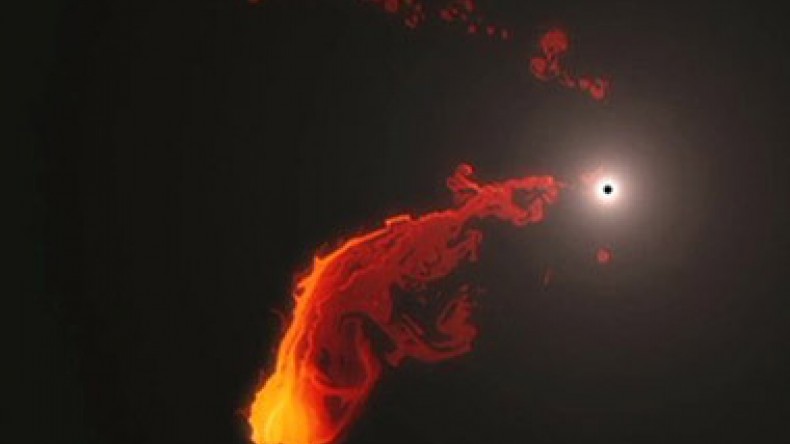
Black hole to 'eat biggest meal'
Astronomers are getting ready for their best ever glimpse of the mysterious black hole at the heart of our galaxy, the BBC reports.
"Fireworks" will flare if it gobbles up a giant gas cloud which is drifting perilously close.
A collision is now likely in spring, according to scientists at the American Astronomical Society meeting.
Stargazers will be able to see the climax on a new public monitoring website.
"This could be our black hole's biggest meal in hundreds of years," said Leo Meyer, of the University of California, Los Angeles.
"It might bring spectacular fireworks - and we want everybody to watch."
The collision could give astronomers a unique window on one of the universe's great enigmas.
Black holes are so dense that not even light can escape them, once it passes their event horizon (point of no return).
They can only be observed indirectly - from brief flashes of radiation released by matter falling in.
The giant gas cloud G2 is three times the mass of Earth. It was first spotted in 2011 hurtling towards Sagittarius A* - the black hole in our galactic core.
Impact is now just a few months away. If the gas drifts close enough it will heat up, releasing great flares of X-rays, which shed light on the black hole's properties.
Astronomers have already secured front row seats. Dr Meyer's team is tracking the cloud's approach using the Keck Observatory in Hawaii.
They can see it "stretching like spaghetti" as the black hole tugs at its head, now moving much faster than its tail.
And while Keck watches the cloud, Swift is watching the black hole. Nasa's X-Ray space telescope is poised and primed to catch the first glimmers of an encounter.
Newsfeed
Videos






























